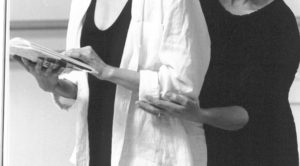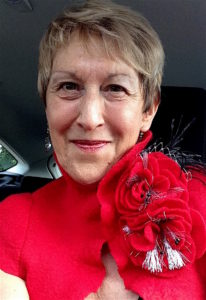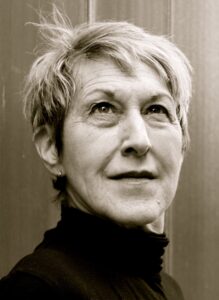Glenna Batson, ScD, PT, MA
Certified teacher of the Alexander Technique, mAmSAT
A.T. Ease Alexander
https://peabody.jhu.edu/faculty/glenna-batson/
https://thinkingbody.org/education/contributors/batson/
Biosketch
For more than five decades, Glenna Batson has worked at the intersection of dance, human movement science and somatic education. Professor emeritus of physical therapy, Glenna has drawn from multiple sources as catalysts for teaching, research, consulting, advocacy, and artistic growth – a convergence described in her book Body and Mind in Motion: Dance and Neuroscience in Conversation. She currently lectures in dance science and the somatic arts at Peabody Institute for Johns Hopkins and the University, the University of Limerick. Clinical investigations include dance improvisation for Parkinson’s, Alexander Technique & balance and mental imagery in stroke rehabilitation, research pathways for mind-body integration.
Full Profile
What is the Alexander Technique?
Is the Alexander Technique for me?
Do the tasks of daily living make your body feel as if you are driving with the breaks on?
Do you suffer from daily muscular tension that does not resolve with rest?
Troubled by past injuries and problems that remain resistant to full recovery?
Can’t benefit from your exercise program despite daily practice?
Need coaching on a task or skill you love to do?
The Alexander Technique
Proactive, Practical, Mindful
The Alexander Technique is method of personal education that addresses stressful living. You need no special equipment – no need to find a quiet, meditative room to learn it. The Technique is applied right in the moment, within simple everyday activities – walking, sitting, standing, bending, rising from a chair. The Alexander Technique can help to improve balance, movement ease and efficiency, and reduce physical pain. At its core, is a practical method in learning how your body and mind can work together to relieve stress and improve coordination. These kinds of postural tensions usually go unnoticed or ignored can lead to health problems over time, problems such as arthritis, back pain, and even insomnia and depression. Above all, it’s easy to learn. Through a series of simple steps, You learn mindfulness on the go – how your body and mind work together to reduce stressful reactions to moving easily and freely in everyday living.
My Clients
I bring the art and the science of movement education to your doorstep in simple language. I do not tell you what to do. First, we quiet the nervous system and come to a place of quiet alertness. We discuss your needs and goals. I then observe how you are moving and assess risk – how you are moving in ways that might lead to injury. I then offer you options to explore for moving more easily and safely. You will learn become aware of unnecessary effortful movements and learn to redirect your attention to releasing muscular tension and finding balanced support. I see myself as a movement muse, partner, scout, advocate, advisor and coach. I will guide you through simple steps that bring about greater balance, ease and redirect you away from stressful patterns. In a few lessons, i will help you develop a life-long program of self-care that is easy to apply.

The clients who find their way to my door include:
Adults with chronic postural tensions due to poor use of their bodies, arthritis, persistent injuries, or simply limitations in aging.
Those with balance problems, neurological problems ( e.g., Parkinson’s) who need customized instruction in safety and self-care;
Performing artists (dancers, musicians, actors and other movement enthusiasts.
Evidence Based
The Alexander Technique is evidence-based. Clinical studies support its use for relief of musculoskeletal back and neck pain, balance, breathing problems, performance anxiety and relief of symptoms associated with Parkinson’s. Watch this short scientific video about the randomized control trials and other scientific support.
Hear more on the benefits of the Alexander Technique from neurologist Dr.David Griesemer.
Watch the pre-test posttest results on a balance exam from a two-week intensive study on the effects of the Alexander Technique on balance for a group of 18 independent elderly (Glenna Batson, Sarah Barker, funded by the University of South Carolina, 2007).
Links
General information & self-help tips www.alexander.com
The American Society for Teachers of the Alexander Technique
The Poise Project – help for people living with Parkinson’s disease
The Irish Society of Alexander Technique Teachers
 Contact Me
Contact Me
Book a customized 50-minute private lesson
Make an inquiry to discuss your specific needs
Organize a small group for a lively, cost-effective session
Add your name to a blind (bcc) E-List to stay informed (opt out anytime)
check out my Writings
